- Home
- Robert J. Sawyer
Foreigner qa-3 Page 27
Foreigner qa-3 Read online
Page 27
"Father!"
Toroca turned. The little yellow boy was running toward him, stubby tail flying out behind. "Father!" he called again.
Toroca bent his knees and held out his arms. The child ran to him, and Toroca scooped him up.
"How’s my boy?" Toroca said, holding him close, feeling his warmth.
Taksan looked at him with golden eyes. "Fine, Father," he said.
"And can you say that in the Other language?"
Taksan nodded. "De-kat, rak-sa. But, Father, I still don’t understand why I have to learn to talk in two different ways. I mean, there’s nobody except you who can understand me."
Toroca set the boy down and crouched beside him. "Someday, you will go somewhere where people speak like that." He patted the child on the shoulder. "Now, run along and play some more."
Taksan gave him a quick hug and went off to join his friends. Toroca watched him go, beaming with pride. Someday Taksan and some of this new generation of Quintaglios would go to see the Others again. He wanted Taksan to be able to say hello to them in their own language. But, more than that, he wanted him to be able to tell the Others just how very, very sorry the Quintaglios were.
Epilogue
The rest of the starships had left at various times over the last few kilodays. But this last ship hung in orbit above the innermost moon of the fifth planet. Liss extended her forefinger claw and used it to move a selector control. The viewscreen snapped to the image of that moon, waxing gibbous. A vast ocean covered almost everything except the frozen polar caps and the single continent with its archipelago of volcanic islands trailing off to the west, and another, smaller, archipelago in the nearside hemisphere. Many chains of volcanoes had popped up recently along fracture lines in the sub-sea crust. They looked like sutures in the skull of some strange round-headed beast.
Twisting white clouds moved in neat east-west bands as the moon spun rapidly on its axis. Intertwined with these were trails of black volcanic smoke, the dying gasps of this world.
Behind the moon was the massive planet they still called Galat-Jaroob, the Face of God. It, too, spun rapidly, causing its methane and ammonia clouds — gold and orange, brown and yellow — to play out into latitudinal bands. An awesome sight, thought Liss. She could understand how her ancestors, five hundred kilodays ago, had fallen into hypnotic stupor when they first saw it.
Liss would be sorry to leave the Face behind, to never bask in the sight of it again. Soon, very soon, this ship, too, would head off into interstellar space. But it was their job to wait, to actually watch the breakup of the Quintaglio moon.
An alarm sounded. The sensors left on various parts of Land were beaming up signals, warning that the final breakup had begun. At that moment, the door to the instrumentation room opened and in floated Geman. He touched Liss on the shoulder. "The computer can look after the cameras," he said. "Come on up and watch it with the rest of us."
Liss checked the controls one last time, then pushed herself off the wall and followed Geman out into the corridor. They soon came to the observation deck. Thousands of green bodies, and hundreds of yellow ones, floated together beneath the vast bubble of the observation dome. Around its edges, ten giant viewscreens showed close-ups from the ship’s external cameras, from free-flying probes, and from cameras left on the surface. Between two of the viewscreens was a glass case, holding the far-seer that had once belonged to Sal-Afsan.
Liss looked at the screens. The volcanoes in the southern part of the great ocean flared first, each in turn, like a chain of lights coming on one by one.
On one of the viewscreens, vast walls of water — waves the height of mountains — crashed against the rocky terrain, smashing the ancient ruins of the old Capital City, then flooding over the damage, sinking it all beneath the waves.
Soon, other volcanic chains, some with cones still submerged beneath the vast worldwide ocean, lit up. The moon Liss had been born on, always somewhat oblate because of its rapid spin, now took on the appearance of a cracked egg, the fissures aglow in red.
Another viewscreen was showing the coastline of Fra’toolar and the blue pyramid that anchored the space elevator. The ground was shaking, and the elevator shaft, an impossibly long blue finger reaching up toward the L3 point, was shifting back and forth. Although from the ground the vibration at first seemed minimal, another viewscreen showed the top of the shaft swinging in a vast arc.
The land was buckling and soon the stone ground beneath the pyramid started to crack. The blue material was virtually indestructible, but slowly the tower’s base began to separate from the rock strata. It didn’t topple, though. Rather, it gently rose up into the sky. The tower had begun to rotate around its midpoint, some 6,600 kilopaces above the surface of the dying moon. Although soon there would be nothing at all left of Quintaglio civilization, the blue tower, a calling card from those strange five-eyed beings who had transplanted life to this and other worlds millions of kilodays ago, would apparently survive the breakup of this moon.
When Liss’s world at last fell apart, it did so with each component trailing glowing red streams of magma, like fiery entrails. The globe split into three large chunks and two smaller ones. Each began to move at a slightly different speed. The same differential tidal forces that had torn the world asunder now caused each piece to find its natural orbital velocity based on distance from the Face of God.
It wasn’t long before the two largest hunks touched together again, silently shattering into hundreds of smaller pieces, the water that had covered them both scattering everywhere, freezing into droplets in space like a trillion new stars, twinkling as they tumbled in the blue-white light of the distant sun.
In successive orbits, the large chunks, tugged this way and that by gravitational interactions with each other and with the remaining thirteen moons, brushed and bounced together, grinding into smaller and smaller fragments. Already the pieces of debris were spreading into a thin band covering a few percent of the circumference of their orbits around the Face of God.
As the process continued, the shattered remnants of the home world would grind into hundreds of thousands of chunks, ranging from flying boulders to gravel-sized pieces, slowly distributing themselves into a vast, flat ring around the orange-and-yellow-banded planet.
The ship’s central computer was an artificial intelligence whose mind simulated that of the greatest Quintaglio thinker of all time. Its neural nets had been configured and reconfigured until they had been trained to give the same responses to the question that the original had, three hundred and thirty kilodays ago, when his words had been recorded by Mokleb, the founder of modern psychological research, who had probed his every thought, every emotion.
The observation deck was crowded, but Liss was close to one of the pairs of glossy black hemispheres that were the computer’s stereoscopic cameras. "Afsan," she said, "how long until the rubble actually forms a continuous ring around the Face of God?"
The computer’s voice was deep and smooth, reassuring with its quiet confidence and the hints of serenity and wisdom that legend said were the hallmarks of the original Afsan. "I’m afraid we won’t be able to stay for it," said the voice. "It’ll take at least a hundred kilodays." And then a little sound effect issued from the speaker, a clicking like teeth gently touching together. "But when it’s done, it will be a glorious sight — a beautiful reminder that, once upon a time, our home world did indeed exist."
The ship tarried a few days more, taking measurements. Then, at last, with everyone strapped onto his or her cushioned dayslab, the engines were brought on-line. Liss felt something she hadn’t felt for a long time — the first faint sensation of her own weight — as the ship gently nudged out of orbit.
They had tried establishing colonies in this solar system, tried living under pressure domes on the third moon of Kevpel and on the rocky surface of Gefpel, tried living in orbital habitats. But none of those was a proper existence; they wouldn’t do forever.
And so n
ow they were leaving, all of them, green and yellow, Quintaglios and what had once been called Others, looking for a suitable home, a world on which they could run and play and hunt in the open air.
It would be a long voyage, and Liss would be dead well before it was over. But someday the children of the children of the eggs she now carried within her would arrive at their new home.
Their new home.
And their old home.
The monitoring room at the top of the space elevator had shown them pictures of the thirty-one worlds that the ark-makers had seeded, as well as pictures of the original home world, the crucible on which life had originally arisen. An antenna running along the tower’s 13,000-kilopace height had picked up images continually broadcast by self-repairing probes left on those worlds by the ark-makers millennia ago.
Most of the Quintaglio generation ships had gone to new worlds discovered by orbital far-seers; a few had been dispatched to some of the worlds that had life already seeded on them; but this one ship, the last, had a very special mission.
It was going home.
Liss wondered whether the strange tailless bipeds, those long-lost cousins of the Quintaglios, would be glad to see them when they arrived back at their original world.
Time would tell.
The full-acceleration alarm sounded.
And the starship Dasheter surged ahead.
Appendix:
A Quintaglio Concordance
Dates given use the old pre-Larskian calendar, and are in kilodays after the hatching of the Eggs of Creation as told in the first sacred scroll. Individuals are alphabetized under their common names (without praenomen syllables); full names, when known, are given in parentheses. After each reference, the book in which the item was first presented is indicated: [1] for Far-Seer, [2] for Fossil Hunter, [3] for Foreigner.
adabaja : type of tree; since it is easy to waterproof, its wood is used in sailing ships and exterior scaffolding. [1]
Adkab: (7093– ) a male Quintaglio, the fifth of seven apprentices to Tak-Saleed. [1]
Afdool: a Quintaglio name meaning "meaty legbone." [1]
Afsan (Sal-Afsan): (7096– ) a male Quintaglio, the seventh and final apprentice to Tak-Saleed; he became known as "The One." He was hatched in Pack Carno, Arj’toolar province, the son of Pahs-Drawo. The name Afsan means "meaty thighbone." Blinded by Det-Yenalb in 7110, he later became an advisor to Emperor Dy-Dybo. [1]
Afsanian revolution: the intellectual, political, and religious upheaval following the discovery by Sal-Afsan in 7110 that the Face of God is a planet. [1]
Afsan’s rock: a particular granite boulder (technical designation: Sun/Swift-Runner/4) at Rockscape favored by Sal-Afsan. [2]
Anakod: a male Quintaglio psychologist; once a promising student of Nav-Mokleb, now a professional rival. [3]
anchor: armless wingfinger-derived reptile indigenous to the south pole. [2]
Apripel: the eighth and outermost planet of the Quintaglio sun, a small, rocky world whose presence was first suggested to the Quintaglios by a system map seen in the observing room atop the Jijaki space elevator. [3]
Arbiter of the Sequence: the individual responsible for overseeing "the Sequence" — the official ordering of all information. Var-Osfik held this post during Sal-Afsan’s time in Capital City. [2]
Arj’toolar: a province in northwest Land, home of Sal-Afsan, known for orange-and-blue-striped shovelmouths and the contemplatives of its holy land. Provincial color: white. [1]
ark-makers: Quintaglio term for the Jijaki. [3]
arks: hydrogen ramjet starships used by the Jijaki to transport plants and animals from Earth to the thirty-one destination worlds; the final ark, the Ditikali-ot, crashed into the Quintaglio moon. [2]
armorback: ankylosaur; herbivorous armored dinosaur. [1]
artifact, alien: a Jijaki handheld computer found by Kee-Toroca at the Bookmark layer in 7126. [2]
aug-ta-rot : Quintaglio term for "demon," literally meaning one who can tell lies in the light of day. This term was applied to the followers of the original five hunters who refused to accept Larsk’s view of the world; the borders of the Tapestries of the Prophet show aug-ta-rot beings. [1]
Avenue of Traders: one of Capital City’s widest thoroughfares. [2]
Baban (Ho-Baban): a Lubalite songwriter, best known for "The Ballad of the Ten," which tells the story of Lubal’s original Pack. [1]
Babnol (Wab-Babnol): (7110– ) a female Quintaglio from Pack Vando in Arj’toolar province who joined the Geological Survey of Land in 7126. She retained her birthing horn into adulthood. [2]
banded swift: a species of wingfinger with white fur and pale orange stripes. [3]
Bay of Three Forests: a small bay in Jam’toolar at the westernmost tip of Land; the Dasheter landed here after its first circumnavigation of the world. [1]
beat (or heartbeat): the shortest standard unit of time, equal to about 0.42 Earth seconds; this unit was eventually standardized by the Arbiter of the Sequence at 1/100,000 of a Quintaglio day. [1]
Belbar: one of the five original hunters, symbolized by the color blue. [1]
Belbar, Cape of: a storm-ravaged cape in Edz’toolar whose tip is the southernmost point in mainland Land. [1]
Belbar, Song of: a song about one of the original five hunters; one of its verses says, "If beasts confront you, slay them. If the elements conspire against you, overcome. And if God should call you to heaven before you return, then heaven will be the richer for it, and those you leave behind will honor you and mourn your passing." [3]
Belkom, Plaza of: a public square in Capital City. [2]
Big One, The: second of the Face of God’s fourteen moons, orange in color. [1]
Biltog (Mar-Biltog): the Dasheter’s longest serving mate; a short-tempered male frequently stationed in the lookout bucket, given to telling endless stories about the old days. [1]
birds: extinct flying creatures, known only from fossils and specimens found aboard the crashed Jijaki ark. [2]
birthing horn: located on the upper surface of the muzzle, this fluted cone is the only one of the facial horns normally associated with tyrannosaurs that Quintaglios still develop. A birthing horn is usually lost about thirty days after hatching. [1]
blackdeath: tyrannosaur; the largest carnivorous dinosaur. [2]
blackpowder: explosive, used for clearing rocks. [2]
Bleen (Det-Bleen): the Dasheter’s bombastic male priest. [1]
bloodpriest: halpataars, a special priest, always male, who devours seven out of every eight hatchlings in each clutch; sometimes referred to as "a disciple of Mekt," the first bloodpriest. [1]
Bogkash (Del-Bogkash): male who succeeded Det-Yenalb as Master of the Faith; fired by Dy-Dybo in 7128. [2]
Boodskar: a volcanic island, westernmost member of the archipelago to the west of Land. [1]
Bookmark layer: in a coastal cliff face on the eastern shore of southern Fra’toolar province, nine-tenths of the way up to the top of the cliff, this chalk seam marks the oldest fossils ever found, and was taken by some to indicate the point of divine creation. [2]
Book of Rites : a standard Lubalite religious text, banned by Larsk. [1]
Brampto: a Pack in Arj’toolar; Bor-Vanbelk, inventor of the small-seer, comes from there. [3]
Bripel: the sixth planet of the Quintaglio sun; a ringed gas giant with sixteen moons. [1]
Cadool (Pal-Cadool): A lanky, illiterate male butcher at the imperial palace who becomes Sal-Afsan’s personal assistant. A Lubalite. Cadool means "hunter of runningbeasts," but Wab-Novato calls him "Cadly," meaning "long of leg." [1]
Cafeed: apprentice bloodpriest under Mek-Lastoon in Pack Tablo in Edz’toolar. [2]
calthat’ch : Quintaglio word for "fraud." [1]
Capital City: the city built on the site of Larsk’s landfall after returning from discovering the Face of God. The largest and most populous city in all of Land. [1]
Capital province: the easternmost provinc
e in Land. Population: 7,000. Provincial color: red. The Emperor is ex officio governor of this province. [1]
Carno: Sal-Afsan’s home Pack, in Arj’toolar province; Carno roams along the northern shore of the Kreeb River. At the time Afsan left, its governor was Len-Haktood. [1]
Carpel: the innermost planet of the Quintaglio sun, a small and rocky world with no moons. [1]
Cartark (Bon-Cartark): a member of Pack Tablo in Edz’toolar. [2]
cartouche: personal identifying mark; an oval shape containing symbols or glyphs. [1]
ca-tart : Quintaglio word for "toys." [1]
Catekt (Tol-Catekt): a past leader of the imperial hunt, [1]
census bureau: official repository of records, located in Capital City. [3]
centiday: a unit of time equal to one one-hundredth of a Quintaglio day; about seven minutes. [2]
centipace: a unit of linear measure equal to one one-hundredth of a pace; about one centimeter. [2]
central square: a large open area in Capital City where Larsk had made many speeches. Afsan was blinded there, and the battle between the Lubalites and the palace loyal took place there in 7110. The arches of Dasan and the First Emperor were located there, as was Pador’s famous marble statute of Larsk, but all were destroyed in the great landquake of 7110.
Ch’mar volcanoes: a range of active volcanoes to the west of Capital City. [1]
Chu’toolar: a large province in north-central Land, known for its glassworks and resort beaches. Provincial color: light green. [1]
coiled mollusk: ammonoid; a chambered, shelled cephalopod. [1]
Colboom: (7112– ) a male member of Capital Pack, creche-mate of Bos-Karshirl. [3]
creche: communal nursery. [1]
creche, imperial: the nursery for members of The Family. Eggshells of past Emperors are on display there. [1]
creche master/mother: terms used for Quintaglios who work in the communal nurseries. [1]
creche-mates: individual surviving members of each clutch of eggs laid in the same hatching period. Quintaglios are closer to their creche-mates than to anyone else, hence the saying "creche-mates are as one." [1]

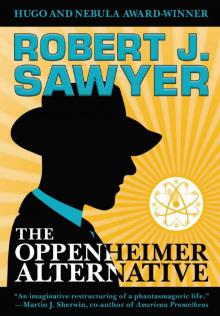 The Oppenheimer Alternative
The Oppenheimer Alternative Factoring Humanity
Factoring Humanity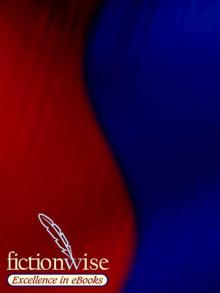 The Shoulders of Giants
The Shoulders of Giants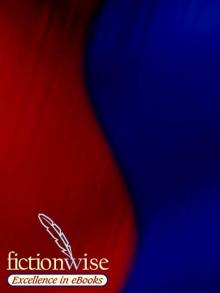 Stream of Consciousness
Stream of Consciousness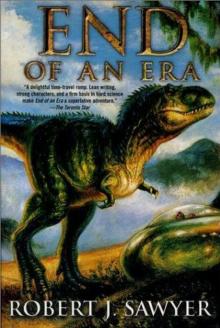 End of an Era
End of an Era The Terminal Experiment
The Terminal Experiment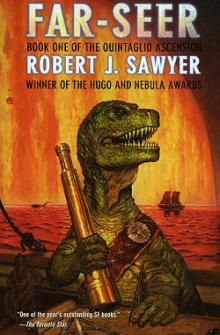 Far-Seer
Far-Seer Mindscan
Mindscan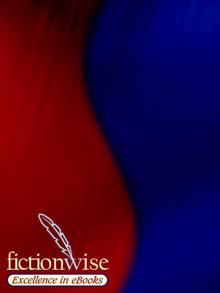 You See But You Do Not Observe
You See But You Do Not Observe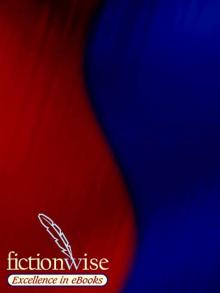 Star Light, Star Bright
Star Light, Star Bright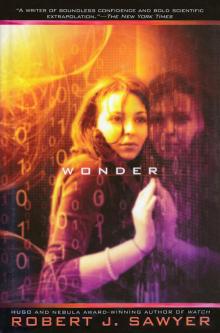 Wonder
Wonder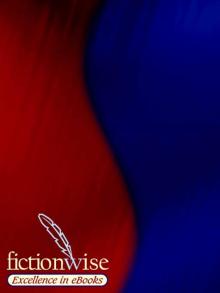 Wiping Out
Wiping Out Flashforward
Flashforward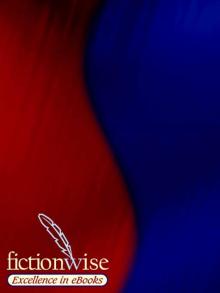 Above It All
Above It All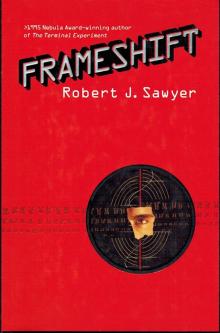 Frameshift
Frameshift The Neanderthal Parallax, Book One - Hominids
The Neanderthal Parallax, Book One - Hominids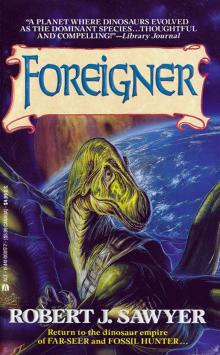 Foreigner
Foreigner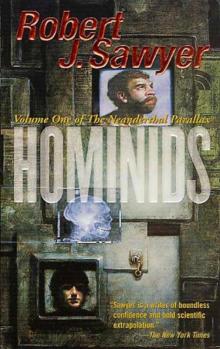 Neanderthal Parallax 1 - Hominids
Neanderthal Parallax 1 - Hominids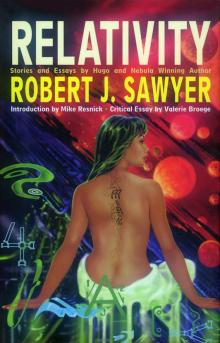 Relativity
Relativity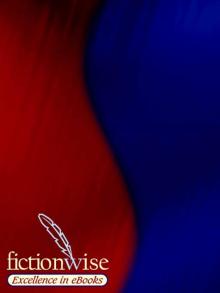 Identity Theft
Identity Theft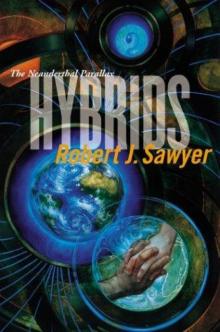 Hybrids np-3
Hybrids np-3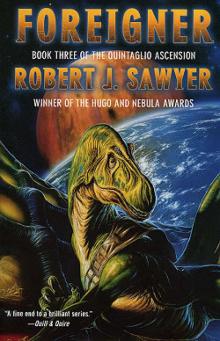 Foreigner qa-3
Foreigner qa-3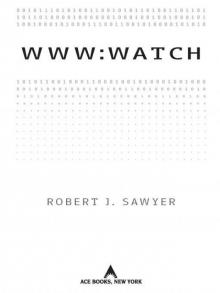 WWW: Watch
WWW: Watch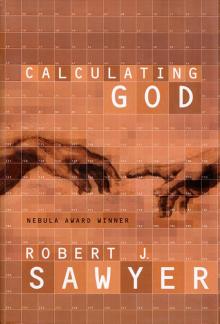 Calculating God
Calculating God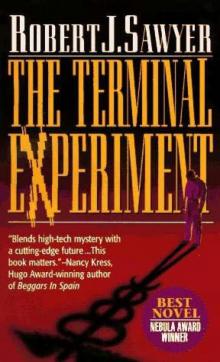 The Terminal Experiment (v5)
The Terminal Experiment (v5)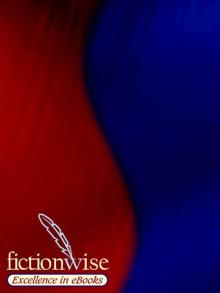 Peking Man
Peking Man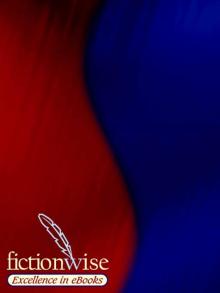 The Hand You're Dealt
The Hand You're Dealt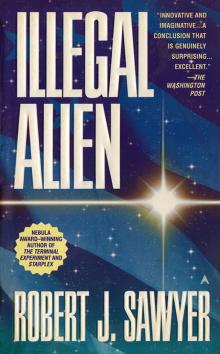 Illegal Alien
Illegal Alien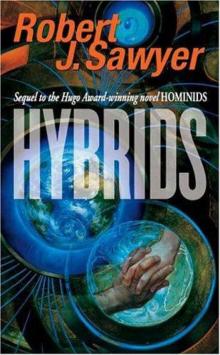 Neanderthal Parallax 3 - Hybrids
Neanderthal Parallax 3 - Hybrids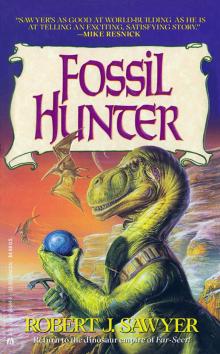 Fossil Hunter
Fossil Hunter WWW: Wonder
WWW: Wonder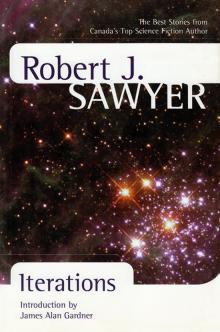 Iterations
Iterations Red Planet Blues
Red Planet Blues Rollback
Rollback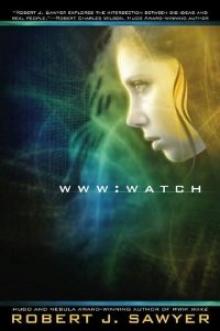 Watch w-2
Watch w-2 Gator
Gator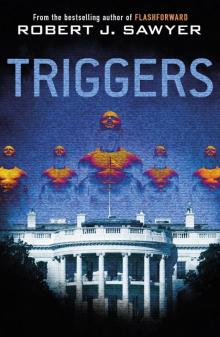 Triggers
Triggers Neanderthal Parallax 2 - Humans
Neanderthal Parallax 2 - Humans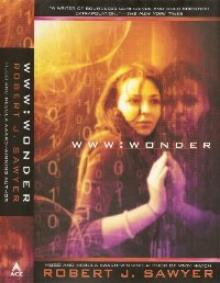 Wonder w-3
Wonder w-3 Wake
Wake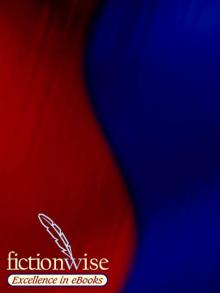 Just Like Old Times
Just Like Old Times Wake w-1
Wake w-1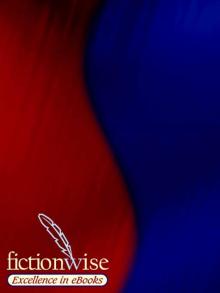 Fallen Angel
Fallen Angel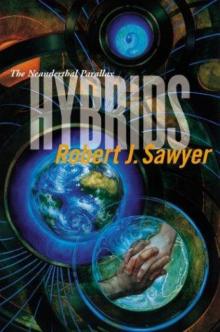 Hybrids
Hybrids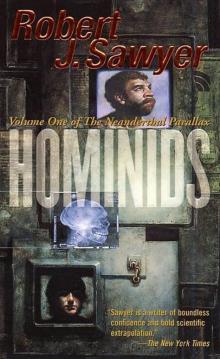 Hominids tnp-1
Hominids tnp-1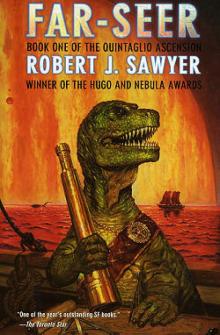 Far-Seer qa-1
Far-Seer qa-1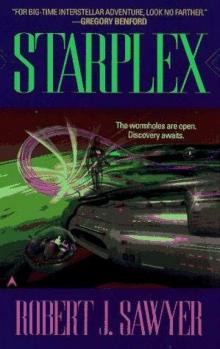 Starplex
Starplex Hominids
Hominids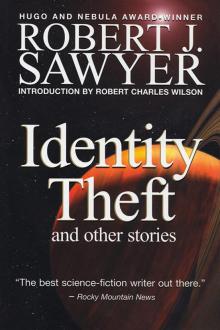 Identity Theft and Other Stories
Identity Theft and Other Stories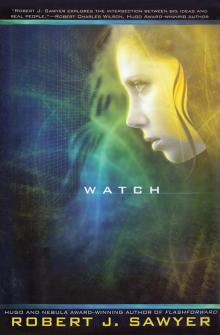 Watch
Watch Golden Fleece
Golden Fleece Quantum Night
Quantum Night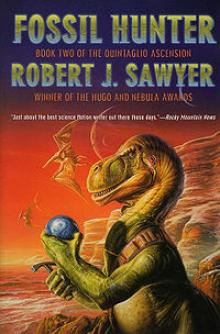 Fossil Hunter qa-2
Fossil Hunter qa-2 Humans np-2
Humans np-2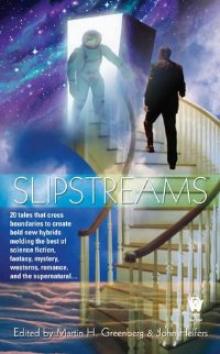 Biding Time
Biding Time